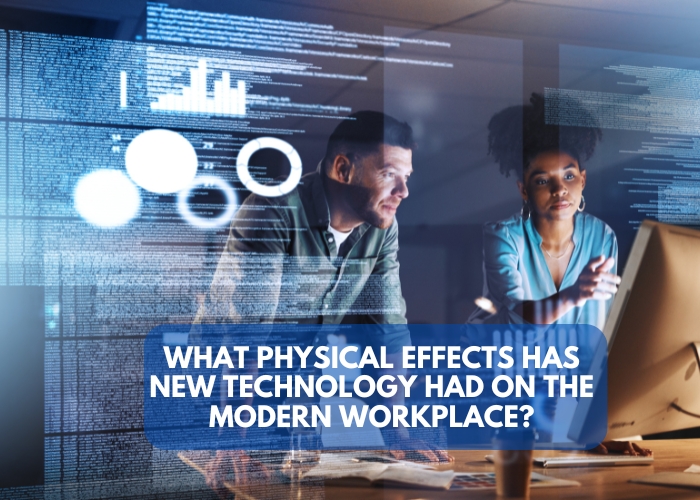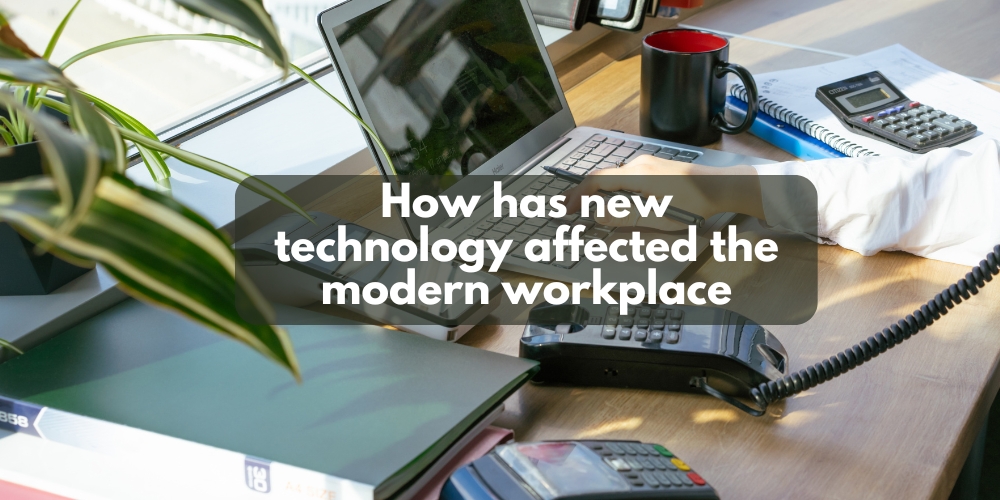The majority of today’s popular office technology has been around for more than ten years, but mainstream acceptance has not recently occurred. The workplace had been gradually embracing modernity before the pandemic. Due to pressure to quickly implement significant changes in 2020, business owners who had previously considered technology as a “nice to have… someday” began to embrace it. New methods of working that enable digital file storage, task automation, remote collaboration, and much more have been made possible by technological breakthroughs. The biggest shifts in the modern workplace during the past few years are listed here. Let’s talk about how new technology has affected the modern workplace.
The main advantages of developing technology

Business executives and decision-makers need to grasp and welcome these developments in this rapidly evolving environment, especially in light of the significant advantages that come with implementing cutting-edge new technology. Among these broad advantages are stronger teamwork, cost savings, higher operational efficiencies, and better customer experiences, to mention a few notable results. Additionally, the digital revolution is enabling people to work flexibly from home, in a traditional office, or even on the go, mobilizing workforces all over the world. In fact, a lot of businesses and workers can now select a “hybrid working” model that fits their needs in terms of employment functions, lifestyles, and locations.
Is there disagreement on digital platforms?
It’s important to note at this point that not all UK businesses have found the shift to digital transformation to be simple. According to PwC research, there is a notable divide among employees: 55% of respondents believe productivity has increased, while 44% believe it has decreased. This split viewpoint lends credence to the idea that, despite the numerous advantages that contemporary workplace technology offers to companies, there isn’t a “one size fits all” answer. Consequently, this poses various difficulties for companies with more intricate needs concerning operational functionality.
What physical effects has new technology had on the modern workplace?

Operating from a distance
Although there has been technology to support remote work for a number of years, many businesses have yet to consider it an essential piece of equipment. With the epidemic, that was altered. In order to support remote and hybrid workers, businesses must implement remote workplace technologies like project management software, online communication apps, collaboration tools, and video conferencing, as nearly 60% of employees work remotely at least part of the time.
This digital revolution is what will keep the modern office successful going forward. Workers are no longer satisfied with working Monday through Friday from 9 to 5. They are unwilling to give up the advantages of hybrid work models because they have witnessed how they can improve work-life balance, lower stress levels, and save time and money on transportation.
Not only can employees gain from remote work, but Remote technology lays the groundwork for improved collaboration, enhanced output, and improved morale. It does this by facilitating video meetings that promote company culture and enabling colleagues to work on a document simultaneously through automated syncing. Enterprises that adopt contemporary work environments and the distant technologies that facilitate them stand to gain from these advantages.
Using analytics to customize the consumer experience
Modern businesses rely heavily on the consumer experience. (This is not unexpected, given that 80% of consumers believe a company’s customer experience is just as important as its goods and services. Businesses need to have a thorough grasp of how customers locate and engage with their websites. Because a large portion of the customer experience now takes place online. Web analytics technologies can help with this.
The modern workplace has undergone a tremendous transformation as a result of the introduction of website analysis tools. Like Google Analytics and Mixpanel. Web analytics specialists, for example, were formerly unheard-of jobs. But they are now essential roles that collaborate closely with marketing, sales, and design teams. By utilizing data like bounce rates, consumer preferences, and live online traffic, businesses can customize their marketing tactics to reach as many people as possible.
Recognizing how buildings are used
Building analytics may help businesses enhance the employee experience . In the same way that website analytics can help them improve the customer experience. With its 1:1 desks and constrained collaborative areas, traditional workplace design no longer supports the current employee experience. Instead, hybrid work models are quickly taking the place of traditional work models.
In today’s workplace, employing building technology to modernize the workspace and enhance the employee experience is becoming crucial. Companies need to seize every chance to establish an atmosphere that people want to work in. Given the heightened competition for talent that remote work has brought about.
Business executives may find it daunting and costly to redesign offices. But building utilization technologies can make the process easier and save costs. Utilization data shows patterns in how workers organically use the workspace. Which enables teams to decide where to build new neighborhoods for socializing and collaborating with coworkers. Companies can also save money by using this data to identify underutilized areas. That can be reduced in size or reused.
Task automation
There is an almost limitless supply of automation software accessible at the moment. Workers can use it to automate time-consuming and repetitive processes, which boosts output, lowers human error, and enhances cost control.
Automation technologies have greatly impacted the workplace. And in the next two years, this impact is expected to become even greater. By 2024, 69% of management workloads should be automated, according to Gartner.
Although some workers may find that statistic worrying, automation does not portend the end of all jobs. Rather, new technology enables workers to shift their emphasis to far more significant facets of their roles. Like a manager concentrating on creating a better team dynamic that enhances collaboration.
Using digital files to replace paper documents
Significant changes in the workplace have been made possible by advances in cloud storage technologies. Although it’s a valuable tool for working remotely, it has also had a noteworthy. Though sometimes disregarded—effect on how much paper is used in the workplace.
Thanks to cloud technology, companies may now benefit from the convenience and reduced cost of digital data. Rather than the headaches and expenses that come with paper workflows. The large amount of space . That was previously devoted to file storage could be better utilized to establish a friendlier, more productive workplace.
In summary
Without a doubt, new technology has revolutionized the modern workplace by providing a wealth of advantages. In terms of efficiency, flexibility, and communication. But it also brings with it difficulties that need to be managed and given serious thought. Businesses and employees must adjust as technology develops further. In order to fully utilize its potential and preserve a welcoming and inclusive work atmosphere.

